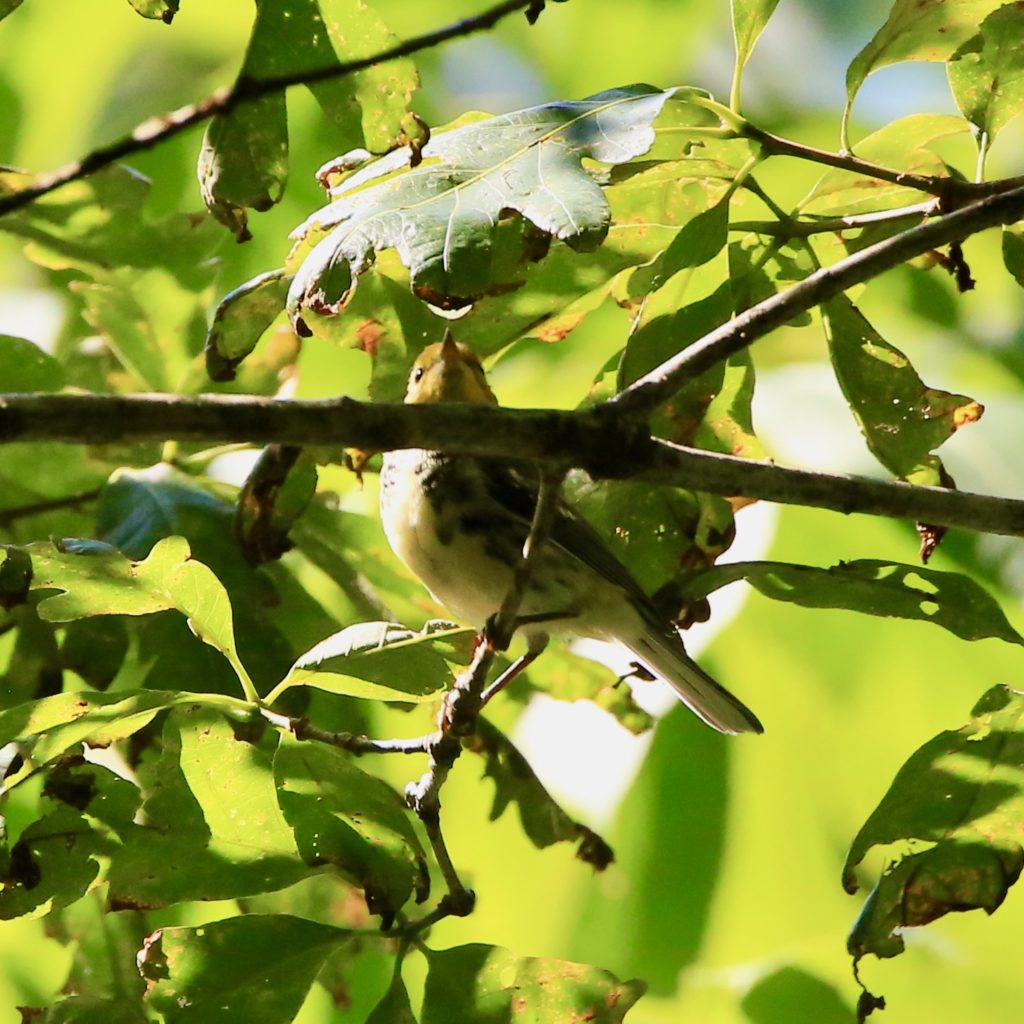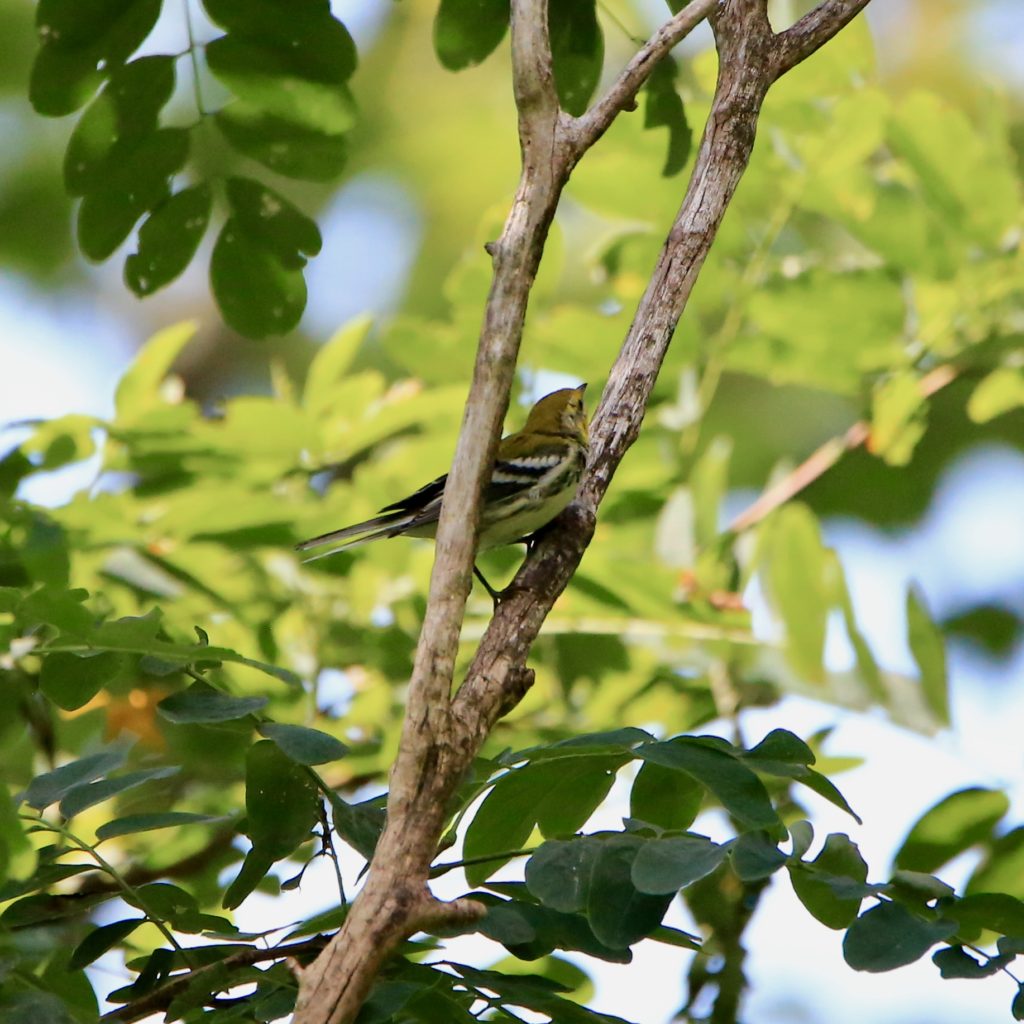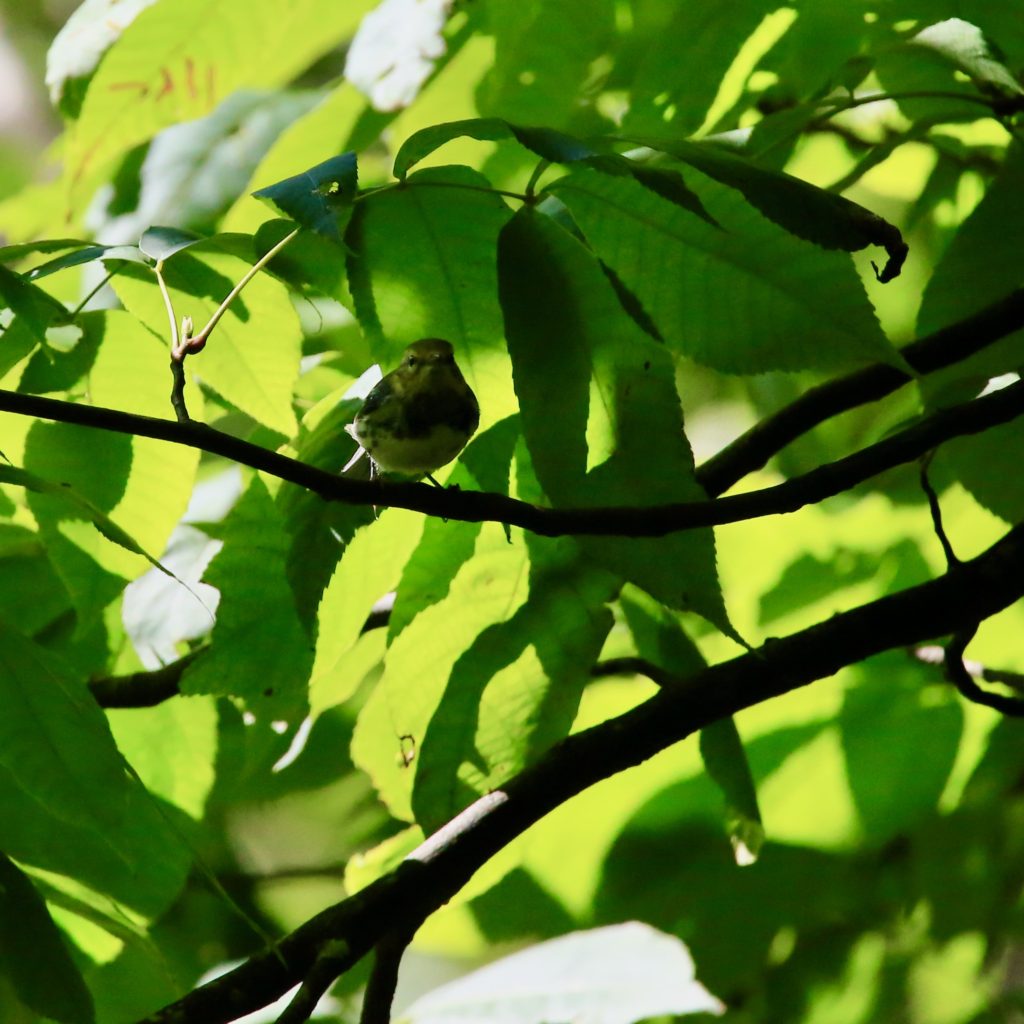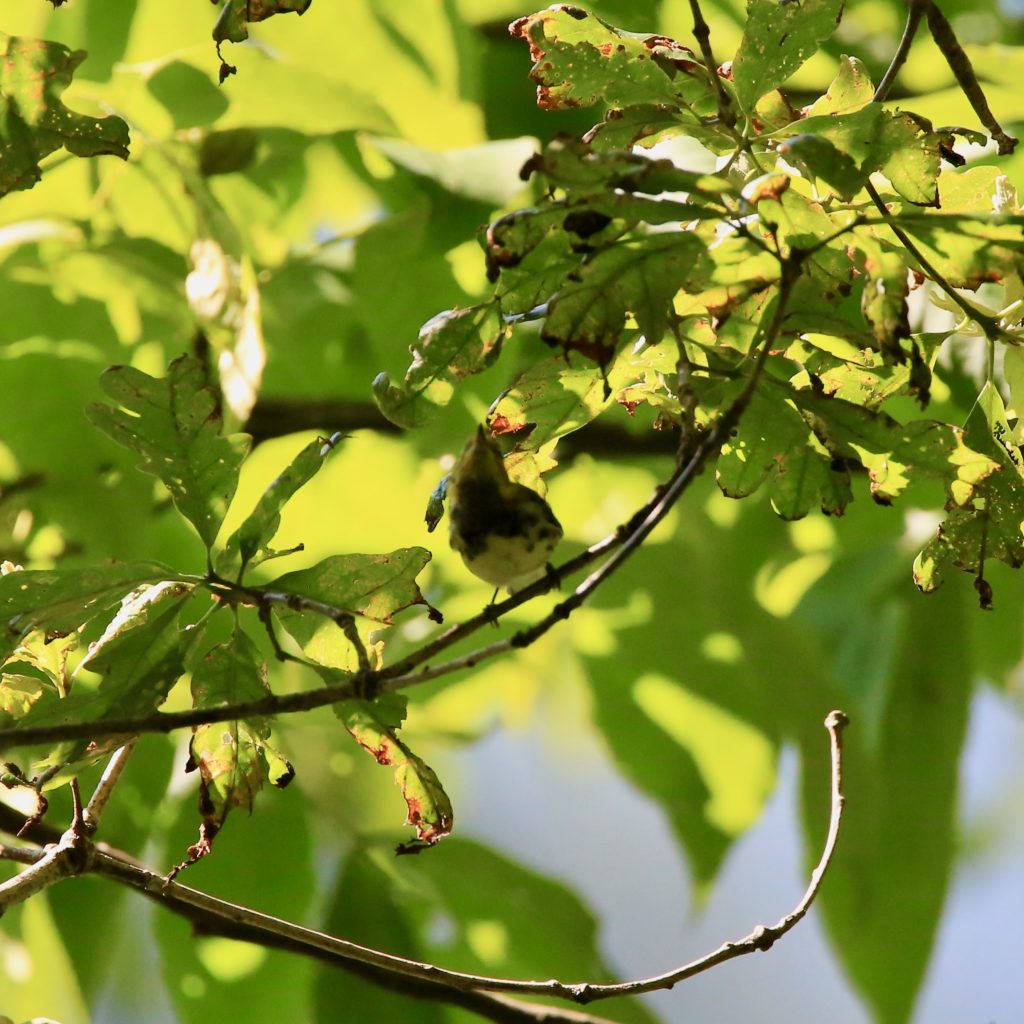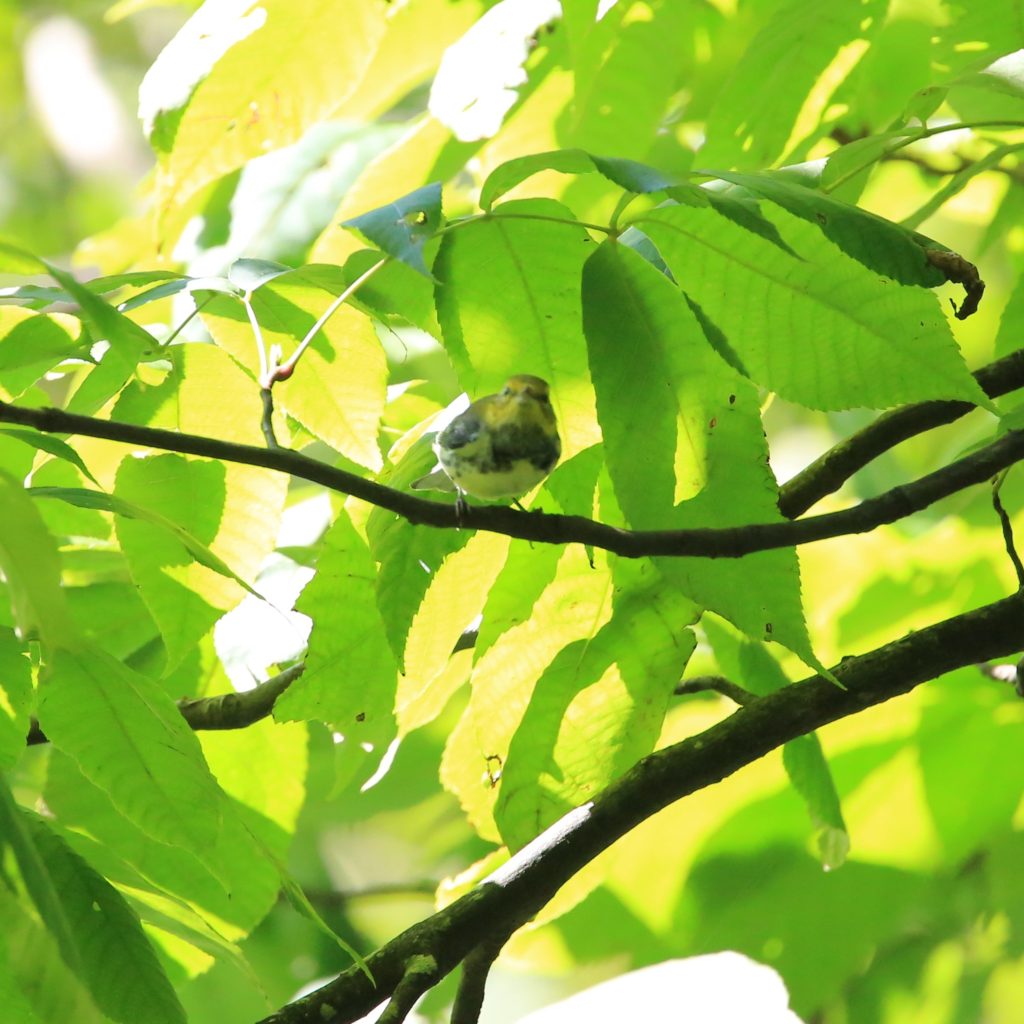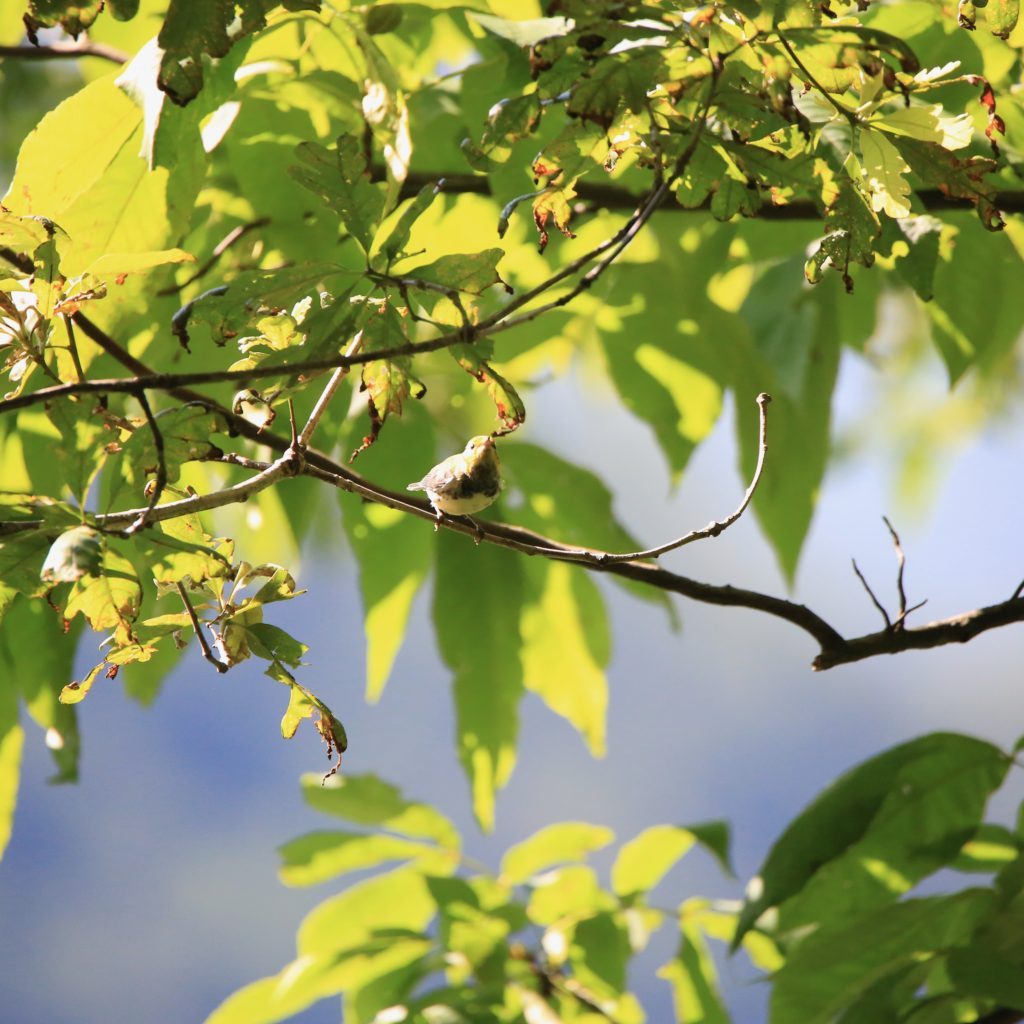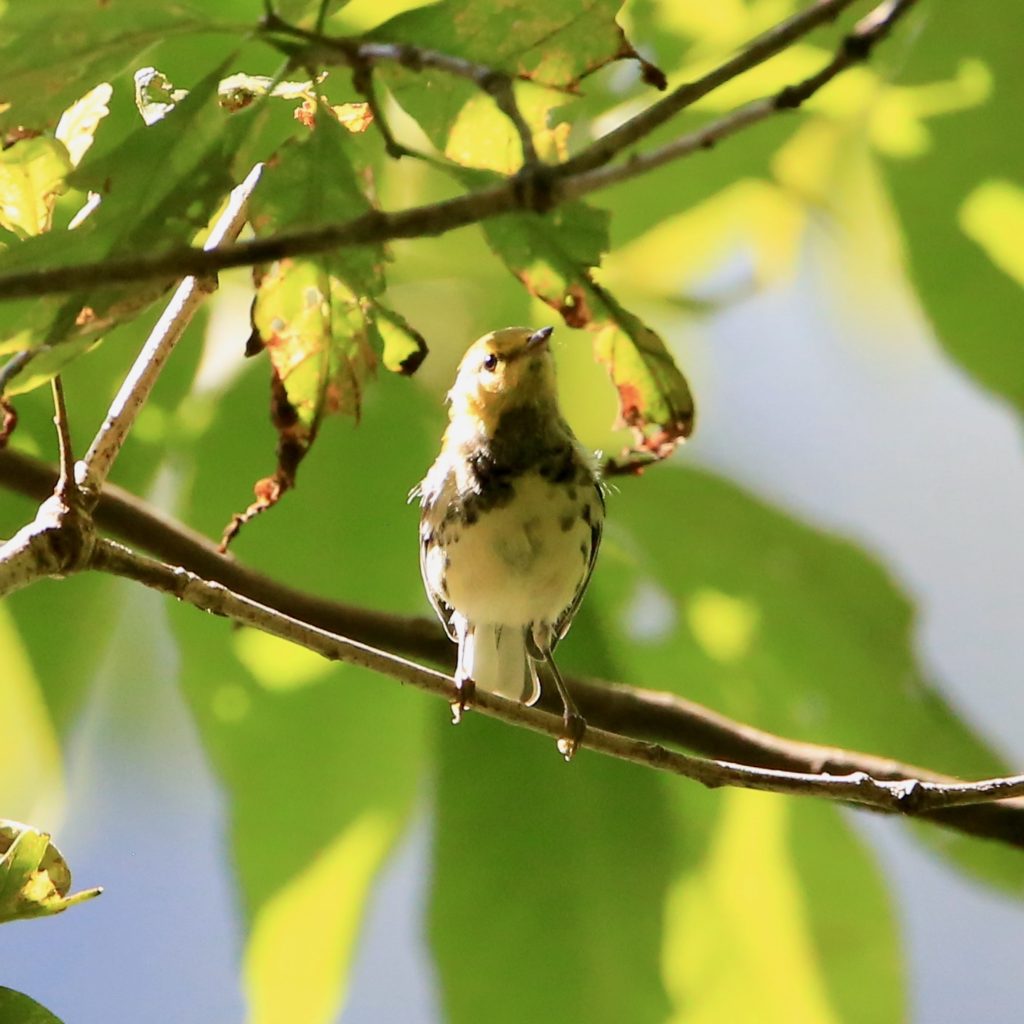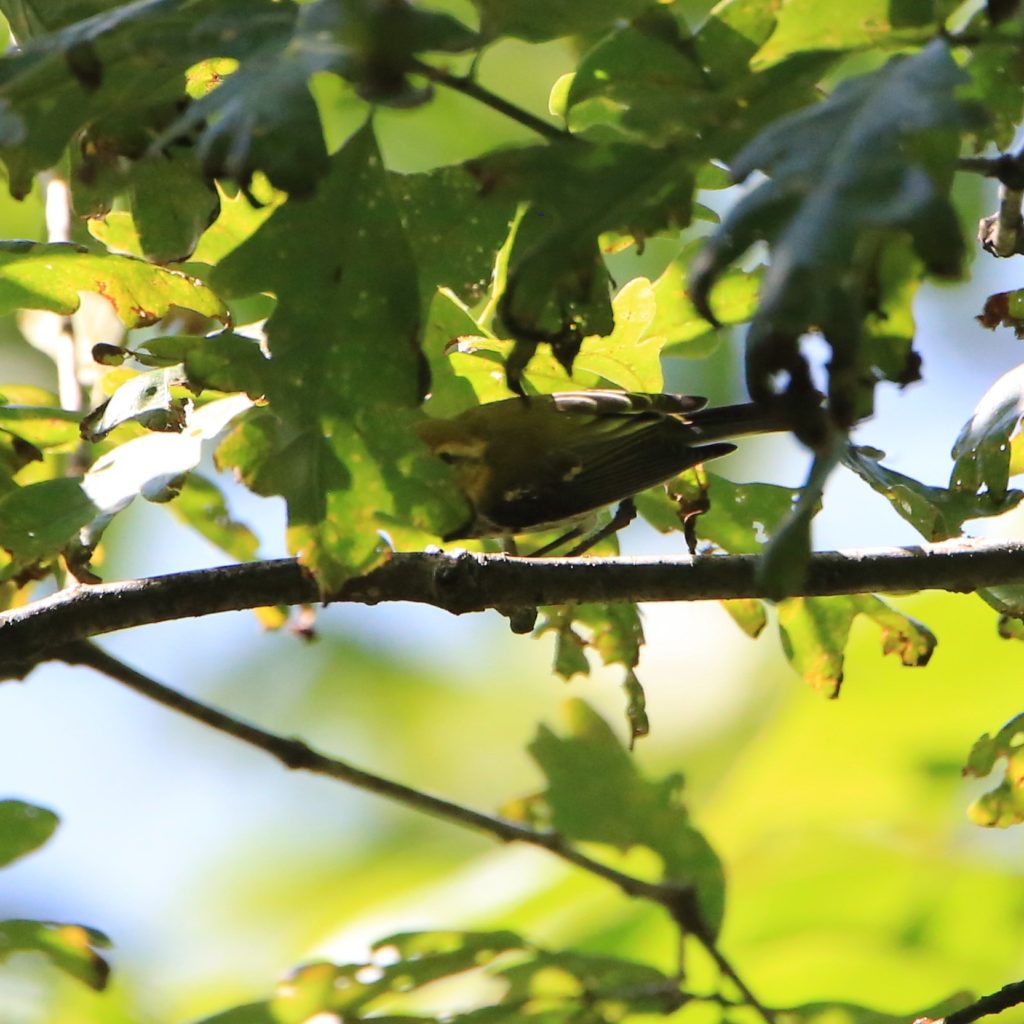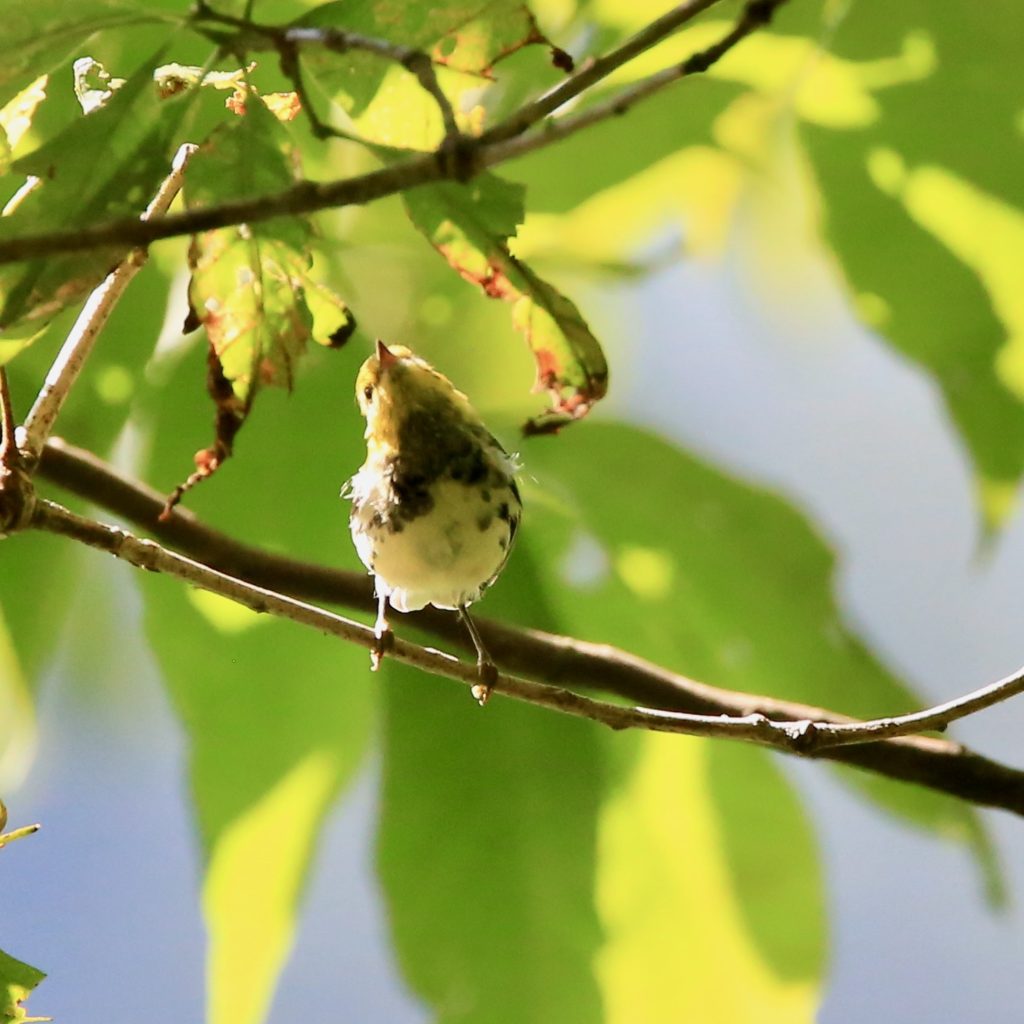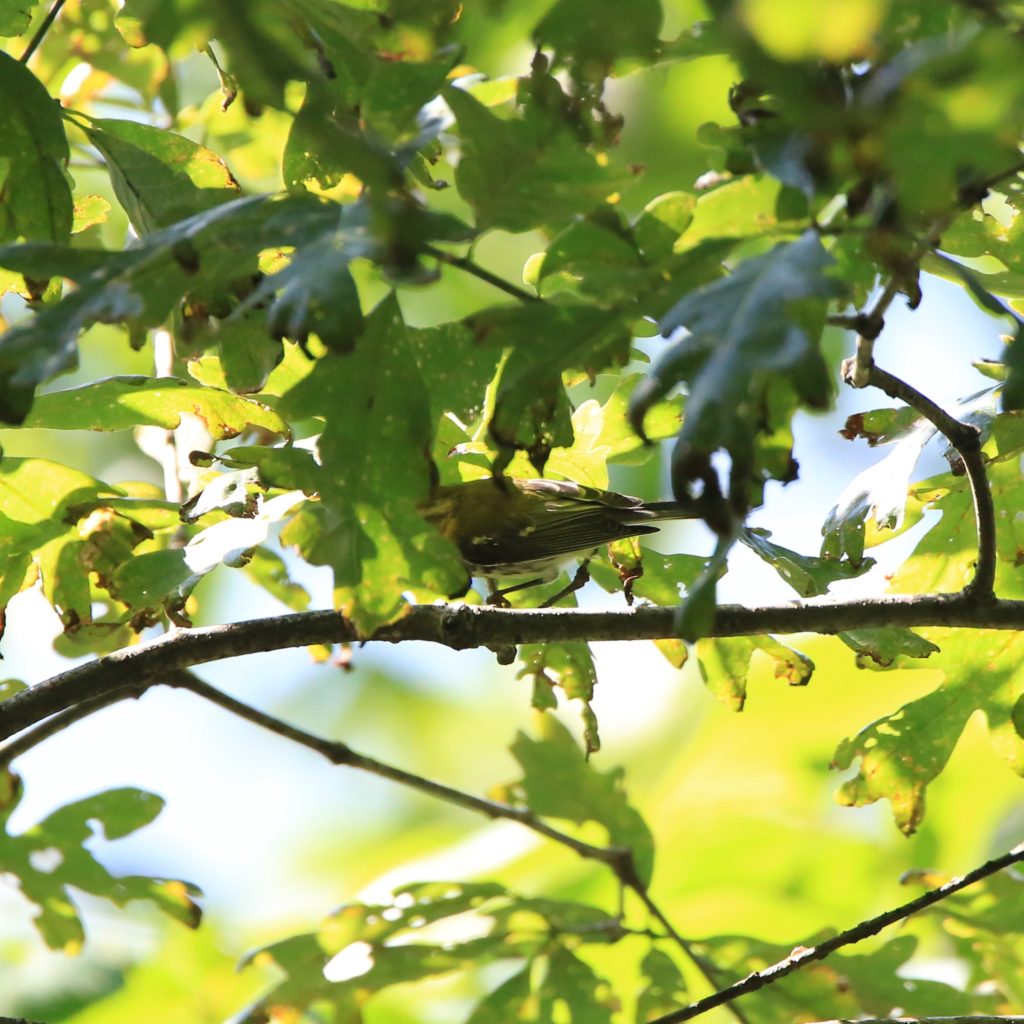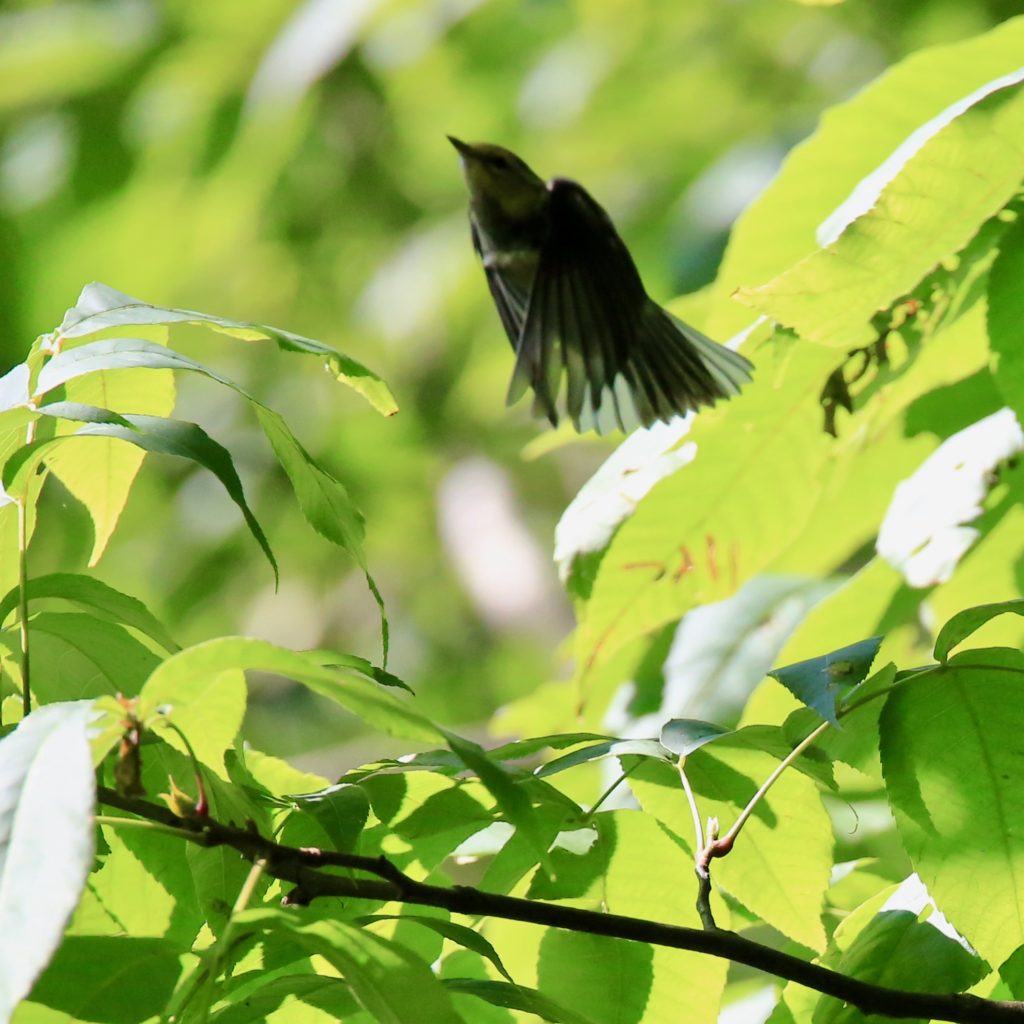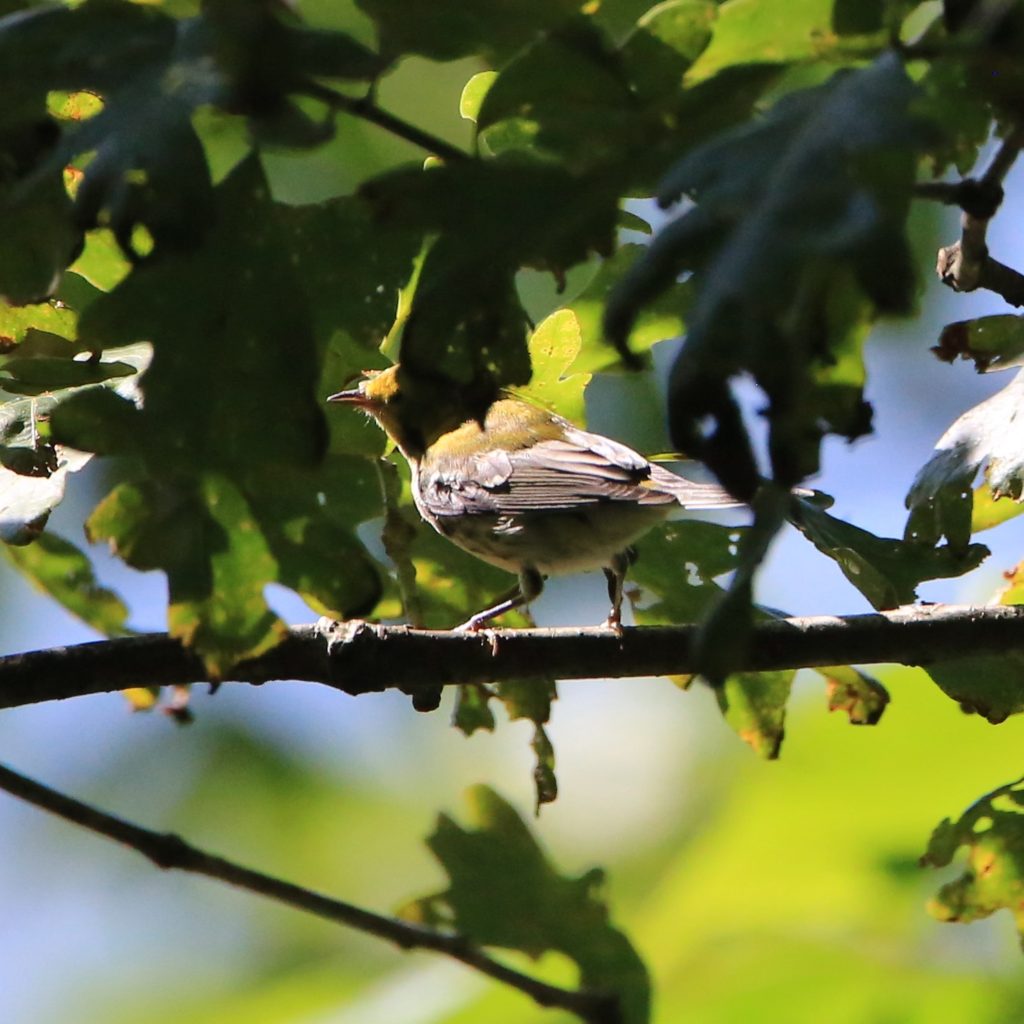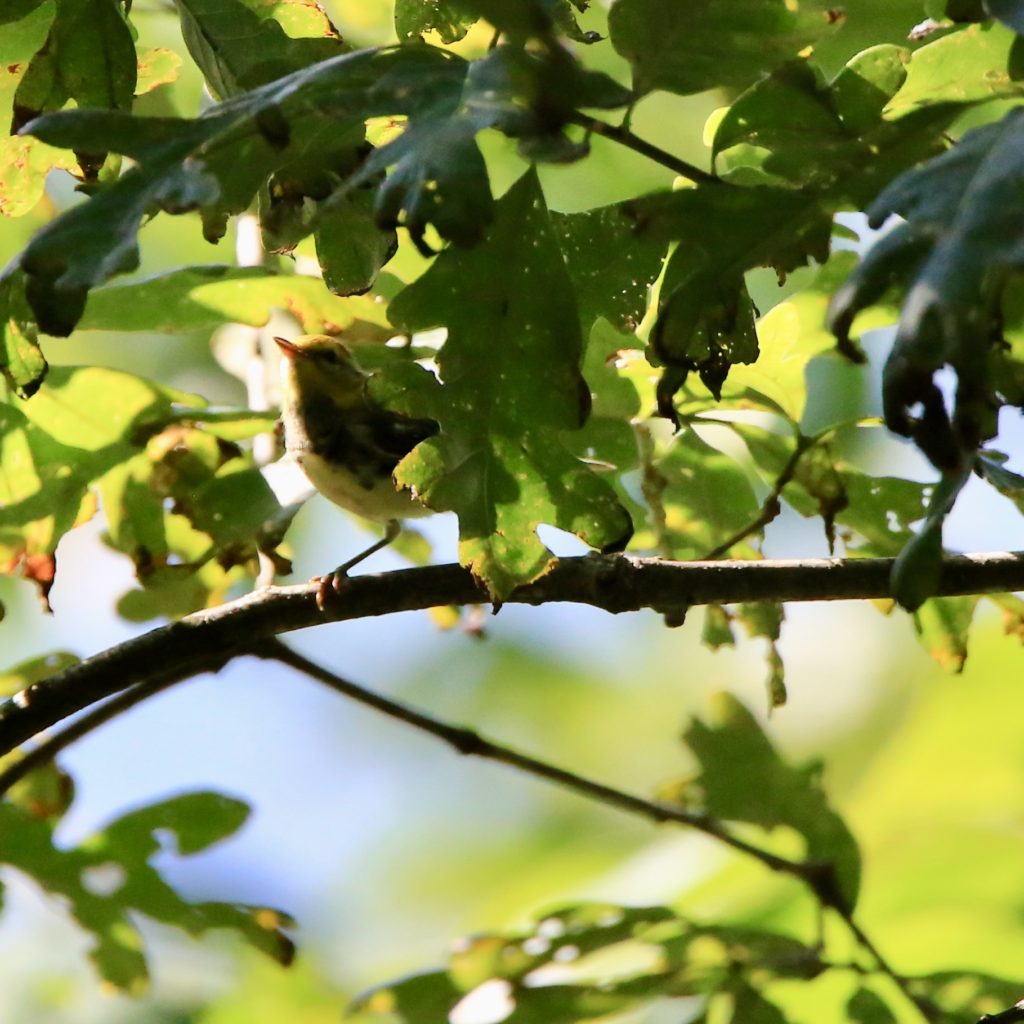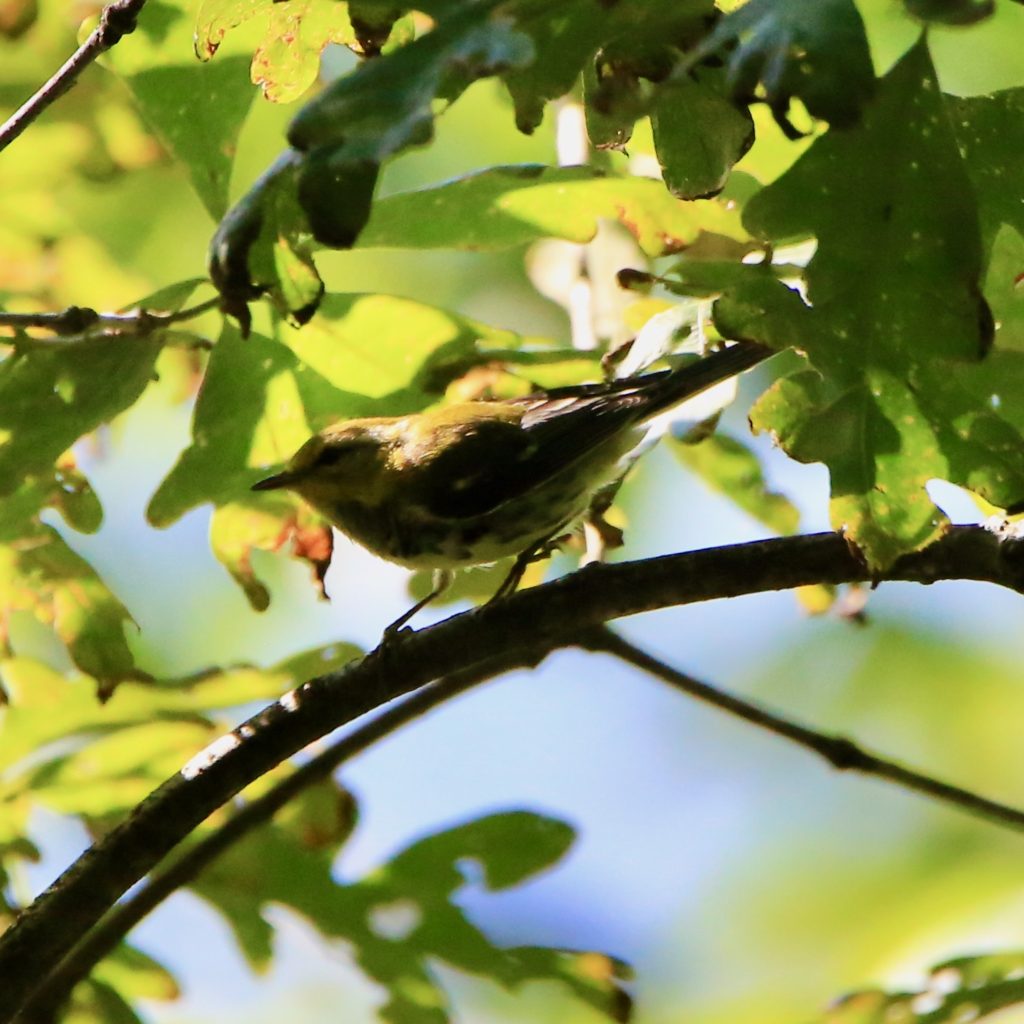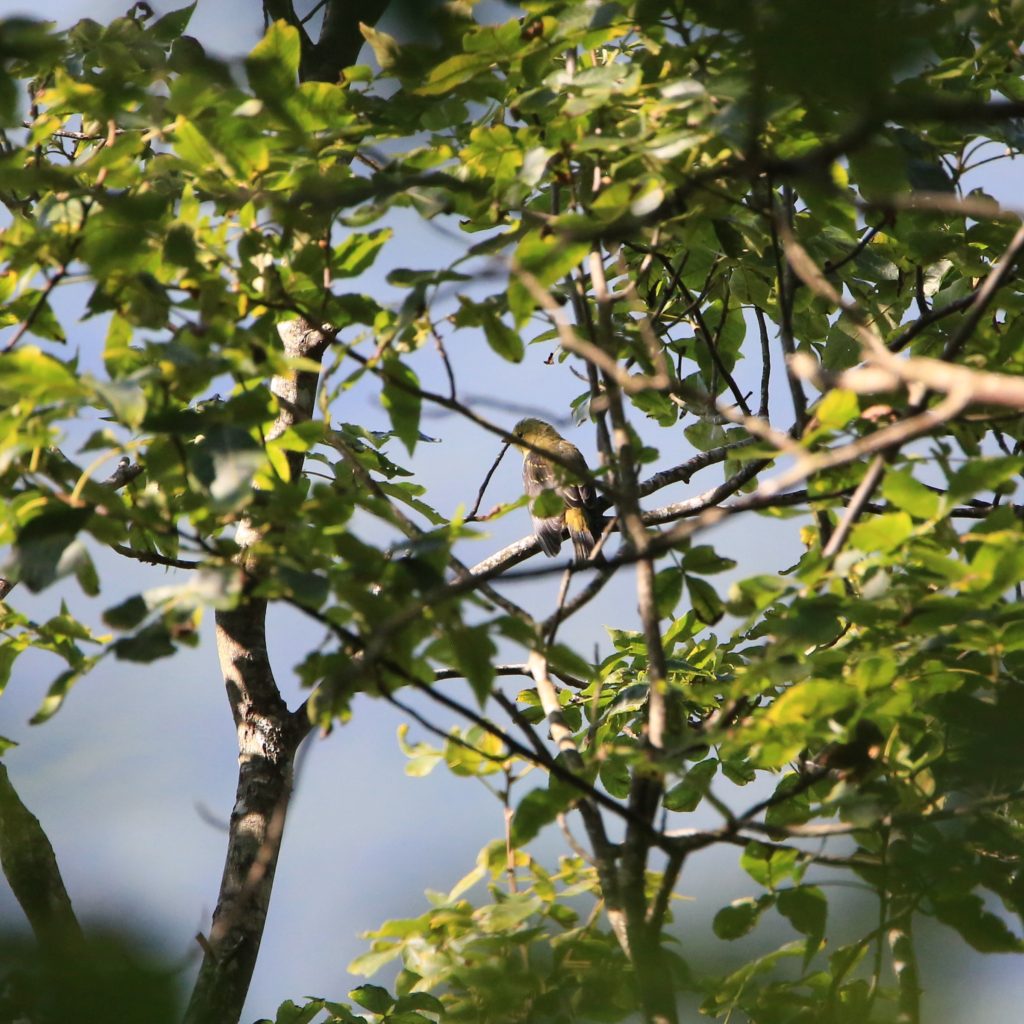
The canopy dwellers of Black-throated Green Warblers make a case for himself even in a family of warblers where one warbler species is prettier than the other. Lemon faced with dark colors all over the plumage, Black-throated Green Warbler appears delicate at first glance.
About Black-throated Green Warblers
In the boreal forests of the north and the hardwoods you see in the southeast region of the US, they do not leave behind the cypress swamps even.
Many birdwatchers find it impossible to ignore the persistent and unique song sung by Black-throated Green Warblers. Humans’ transcription suggests the birds are singing that they love trees, which is catchy and easy to remember. On the east, Black-throated Green Warblers are like the representative species for some closely related species, including Hermits.
We will learn about this species of warblers that have taken the role of maintaining a reputation in the east. Today, we will include:
- Black-throated Green Warblers color pattern, anatomy, and size
- Black-throated Green Warblers song, nesting, and life cycle
- Black-throated Green Warblers habitat, range and migration, and behavior
Black-throated Green Warbler Color Pattern
It is truly a shame that Black-throated Green Warblers perch so high up on trees that people can not see them all the time. They have such beautiful colors to show off on their body that it feels such a shame that they are not interested in letting others see.
Where do we begin? Is it the yellow face that is so adorable, or is it the slight speckle of black as ear patch? Where do you think the green color happens to be on their body as indicated by their name? Well, their entire back is green.
The green also seems to mix in with the yellow stubbornly. The throat, as you might have guessed, is entirely black. It starts from under the bill and ends a little over the chest. The bill is black, of course. The wings are black and white.
The belly is white with black streaks running down the side. The above description is only for the male Black-throated Green Warbler. For the most part, the female Black-throated Green Warbler shares the same color as the male Black-throated Green Warbler.
They have a yellow face and a green-back. However, the female throat is not black colored; it is white. There is also a splash of yellow on the side of their body.
Description And Identification
There are plenty of ways of identifying Black-throated Green Warblers. The foremost would be the color patterns. There is a reason their name is directly related to the colors on their body. Other warblers might have a black throat or a green-back. However, no other has the unique combination of black, green, and even yellow.
Even for the female Black-throated Green Warblers who do not have black colored throats, the distinct yellow in certain places helps identify them. Unfortunately, due to how high up they perch, it is impossible to see the Black-throated Green Warblers’ throats.
So, you have to study the underside instead. Pay attention to the whites on their belly that have stripes with black colors. There are not many species to possess that.
The other way to recognize Black-throated Green Warblers is their song. High pitches notes are a regular occurrence for warblers, but the cheerful sound produced by Black-throated Green Warblers are rare.
Even in a fight, the song sounds quite happy, even though the male warblers certainly do not feel that way. The one they sing for the female Black-throated Green Warblers is equally sweet sounding.
When you hear the song, you won’t be able to forget it easily. Whenever you hear a bird sing as if they are saying they love trees, you know who it is.
Black-throated Green Warbler Song
They have something in common with most warblers when it comes to their songs. You can see Black-throated Green Warblers singing two different kinds of songs depending on their situation.
One song is for their mate, especially when they are in the middle of courting or communicating. The other is for other males, the ones the male Black-throated Green Warblers want to protect their territory.
The territorial song does not have an accent attached to it. The music sounds cheery, with a buzz to it. This song is kind of like “zee zo-zo.” The other is a lovely, accented zee zee zee song for the females. It is when they want to communicate properly, or the courtship is in full swing.
The sound they produced is said to be something like they are saying they love trees. For most people, the call is something they remember long after they have heard it.
They have two kinds of calls. There is the one they give out while in flight. This one sounds like they are saying see. The other is a double chip. It is quite hoarse sounding.
Black-throated Green Warbler Size
In the Setophaga genus, the Black-throated Green Warblers share the same height, size, and shape as many other warblers. They are medium-sized for birds. They are quite plump.
They primarily have a round body, and even their head is round and big. The bill is thick and straight, with no curve to it. The tail is not that long, which is a shame.
In front of a titmouse, they are smaller. Yet, kinglets are shorter than them. In length, they range from 11 to 12 cm. In weight, they can be as light as 7 g or a little fuller of 11 g. Their wingspan is usually 17 to 20 cm. The wingspan is not considered long, but it is not one you can call short either.
Black-throated Green Warbler Behavior
Black-throated Green Warblers love hopping among the arboreal areas. They fly amongst and in between the trees; rarely do they go above the trees. When on their territory, the male gets a bit aggressive.
The sign, fight and chase away any rival male they suspect are encroaching on their space. After they have chased them away, they might do a victory flight. It is not a loud celebration as it is a sudden declaration of joy.
When the male Black-throated Green Warblers are on their territory and singing, they often choose a tree from where one can easily see their head. The pairs maintain monogamy on a seasonal level. The moment their young ones leave the nest, they also part ways.
During fall migration, they might form a group with other mixed flocks. These flocks are usually headed southward. In winter, they might also join other mixed flocks filled with tropical species.
What Black-throated Green Warbler Eat
During the breeding season, they do not pay attention to any food that does not fall under the category of insects. Caterpillars have always been a favorite of warblers. Black-throated Green Warblers have no interest in being different. From deciduous and coniferous trees, they glean it from the branches.
When they are migrating, they are flexible enough to eat berries. If they are in the tropics while wintering, they get more than happy to feast on the buds from cecropia trees.
Where Black-throated Green Warbler Live And Habitat
Black-throated Green Warblers have quite a lot of forest habitat to make their choices from. On their northwest range, they make their nest inside the coniferous forests. In the south of the Appalachians, they stay in the mixed hardwood forests.
In the mid-Atlantic coast, they appreciate the cypress swamps. During the winter season, the small forests where there are canopies are where they rest.
Range and Migration
The migration takes place during the night, as is the case with most warblers. The fall time might continue for a long time, even reaching October. This is especially the case in the north.
The migration period begins in august for Black-throated Green Warblers. From the breeding grounds, they make their way towards the south. From the east side of the Great Plains, they go to their wintering grounds in the east and south of Mexico.
They also winter in Central America. A small portion of this family winters north of South America, Greater Antilles, and south texas.
Black-throated Green Warbler Lifecycle
In a brood, they lay about four eggs. Sometimes, this number decreases to a three or increases to a 5. The eggs are creamy-white, as is the usual occurrence with most warblers.
The eggs might also have completely white splashes or areas where reddish-brown color peaks through. Again, it is always the female Black-throated Green Warbler that takes part in the incubation process. The regular length of 11 to 12 days is maintained here.
They are not the best at protecting themselves against cowbirds. There are areas where the cowbirds might parasite about two-third of their nest.
At first, once the nestlings are born, only the mother feeds them. Afterward, even the father starts gathering food and feeding the young. It takes about 11 days before the young ones are ready to leave the nest. The parents split up the fledglings. Each half is looked after by them for about a month.
Nesting
Following the pattern precedent by many other warblers, they establish territories by singing. If the intruding male is particularly insistent, this might escalate into a fight and considerable aggression. They are not shy about chasing away their enemies.
The nests are made side by side with the trunk. It is where more than two branches come out of the conifer tree. The nests are kept pretty low, with not a massive distance between them and the ground.
The nest in the southern swamp, though, is placed higher. No longer is the nest close to the ground, and it can be about 50’ or even more above it.
Fortunately, both the male and female Black-throated Green Warbler help in making the nest. Twigs, spiderwebs, tree barks, etc., are used to make the open cup nests. They make the lining with fiber, most and hair.
Anatomy of a Black-throated Green Warbler
Black-throated Green Warblers have the same anatomy as most warblers. They are medium-sized with a plump body. Their belly is quite round, and even the head is large. The head is round in shape too.
The bill is straight and quite thick, especially for a warbler. The tail is short, which usually tends to be the case. The legs are thin with equally thin claws. The eyes are those wonderful black and beady ones we all associate with warblers.
Ornithology
Final Thoughts
Black-throated Green Warblers are best known as songsters. They never seem to tire of singing. During spring migration, one can easily track down the male Black-throated Green Warblers as long as you follow the buzz left behind their loud, ringing singing.
Getting to see the bird properly is a different issue altogether. This is because, on canopies, they like to remain pretty high up. You need to stay extremely alert of small birds that seem to be foraging on branch tips. Usually, you will be able to see them, though the angle might be unsatisfactory.
On the other hand, the brightly colored cheeks combined with the black on the back and breast make it impossible to mistake the bird for any other warbler species.
From a conservation perspective, the population has dwindled in the northeast, where they nested a lot before. This change has occurred rapidly in the last few decades. Still, they are popular and widespread all over North America.
When you are searching for them, it is for the best that you have your binoculars ready. The warbler neck is still possible if you are looking for them since you have to crane your neck upwards to catch sight of them. The binoculars will help you take a better look since you are sacrificing your neck as it is.
Bird Watching Academy & Camp Subscription Boxes
At Bird Watching Academy & Camp we help kids, youth, and adults get excited and involved in bird watching. We have several monthly subscription boxes that you can subscribe to. Our monthly subscription boxes help kids, youth, and adults learn about birds, bird watching, and bird conservation.
Bird Watching Binoculars for Identifying Black-throated Green Warblers
The most common types of bird watching binoculars for viewing Black-throated Green Warblers are 8×21 binoculars and 10×42 binoculars. Bird Watching Academy & Camp sells really nice 8×21 binoculars and 10×42 binoculars. You can view and purchase them here.
Black-throated Green Warbler T-shirts
If you love the Black-throated Green Warbler you should purchase a Bird Watching Academy & Camp T-shirt. To help support bird conservation we donate 10 percent to bird conservation activities.
Black-throated Green Warbler Iron On Patches
Kids, Youth, and Adults love to collect our Bird Watching Academy & Camp iron on patches. Our bird watching patches help you keep track of the birds you have seen an identified. You can also display the patches on our Bird Watching Academy & Camp banners.
The Black-throated Green Warbler is a great iron on patch to start your collection with. The patches are durable and can be sewn on or ironed on to just about anything.
Black-throated Green Warbler Stickers
Stickers are a great way for you to display your love for bird watching and the Black-throated Green Warbler. We sell a monthly subscription sticker pack. The sticker packs have 12 bird stickers. These sticker packs will help your kids learn new birds every month.
Bird Feeders For Black-throated Green Warbler
There are many types of bird feeders. Here are our favorite bird feeders for your backyard. We use all of these bird feeders currently. Kids will have a great time watching birds eat at these bird feeders. Using this collection of bird feeders will provide a wide variety and many types of birds.
Best Bird Houses for Black-throated Green Warbler
There are many types of bird houses. Building a bird house is always fun but can be frustrating. These 4 bird houses have become our favorites. Getting a bird house for kids to watch birds grow is always fun. We spent a little extra money on these bird houses but they have been worth the higher price and look great.
Black-throated Green Warbler Activities for Kids
We thought a fun perler bead pattern would be fun for kids. Please download and print with 100% scale to fit perfectly with perler bead patterns.


